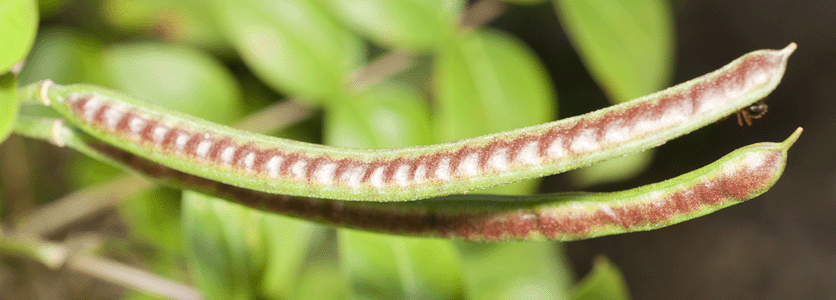Family Fabaceae (Legumes) in the Christopher B. Smith Preserve
Family Fabaceae Characteristics: This group of plants are commonly called  peas, beans, or legumes. The family includes trees, shrubs, perennials and annuals. They all produce fruit that we recognize as legume pods. Most have pinnately-compound leaves. Fabaceae is the 3rd largest family of land plants in number of species. Many members of the family have root nodules where bacteria live, take nitrogen gas from the air, and create nitrogen compounds used by the plant. The process is called nitrogen fixation. Most Fabaceae flowers are pollinated by insects.
peas, beans, or legumes. The family includes trees, shrubs, perennials and annuals. They all produce fruit that we recognize as legume pods. Most have pinnately-compound leaves. Fabaceae is the 3rd largest family of land plants in number of species. Many members of the family have root nodules where bacteria live, take nitrogen gas from the air, and create nitrogen compounds used by the plant. The process is called nitrogen fixation. Most Fabaceae flowers are pollinated by insects.
Interactions in the Smith Preserve: Because the plants have a symbiontic relationship with nitrogen-fixing bacteria, bacteria in its root nodules creates a nitrogen compound that adds nutrients to the soil. This promotes plant growth. Flowers provide nectar to adult insects, legumes and leaves provide food for immature insects and additional animals. The 16 species that have been identified in the Preserve are listed below. Click on the species name to learn more about each one.
Species Name |
Common Name |
Rosary Pea |
|
Shy-Leaf / American Jointvetch |
|
Spurred Butterfly Pea |
|
Partridge Pea |
|
Sensitive Pea |
|
Smooth Rattlebox |
|
Rabbitbells |
|
Royal Poinciana |
|
Ticktrefoil / Beggar Ticks |
|
Downy Milkpea |
|
Hairy Indigo |
|
Wild Bushbean |
|
Sunshine Mimosa / Powderpuff |
|
Septicweed / Coffee Senna |
|
Sand Vetch / Fourleaf Vetch |
|
Hairy Cowpea |
